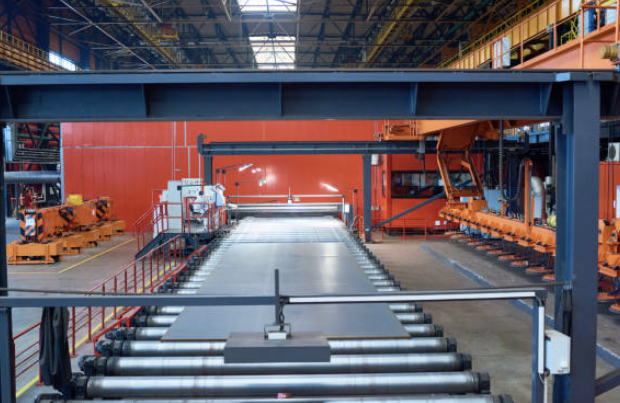
Posted on Thursday, October 31, 2024
The Gambia, a small West African nation, is experiencing a significant push towards infrastructure development to meet the needs of its growing population and boost economic activities. Central to this development is the use of roll forming machines, which have become instrumental in producing essential building materials. This article explores the impact of roll forming machines on Gambia's infrastructure growth, particularly in construction, roofing, and the production of key building materials.
Roll forming machines are revolutionizing the construction sector in Gambia by providing a streamlined process for manufacturing metal components. These machines can produce various profiles, such as C-sections, Z-sections, and other custom shapes, essential for building frameworks. The efficiency of roll forming reduces production time and labor costs, allowing construction projects to progress faster. This efficiency is crucial in a country like Gambia, where timely completion of projects is essential for sustaining economic momentum.
Roofing is a critical aspect of construction, and roll forming machines have enabled local manufacturers to produce high-quality metal roofing sheets. These sheets are durable, weather-resistant, and require less maintenance than traditional roofing materials. The availability of quality roofing materials supports the construction of residential, commercial, and public buildings, enhancing their longevity and safety. As a result, more Gambians can access reliable housing and infrastructure, improving overall living conditions.
The adoption of roll forming technology in Gambia allows for the local production of essential building materials, which significantly reduces dependence on imports. With roll forming machines, manufacturers can create products like gutters, downspouts, and roofing panels tailored to local specifications and needs. This local production not only creates jobs but also stimulates the economy by keeping resources within the country. Furthermore, it allows for quicker responses to market demands and fluctuations in pricing.
Roll forming machines contribute to Gambia's commitment to sustainable development. By producing energy-efficient building materials, they play a part in reducing the carbon footprint of construction activities. Additionally, using locally sourced materials minimizes transportation emissions, supporting Gambia's goals of promoting sustainability and environmental protection. This alignment with global sustainability goals positions Gambia favorably in international discussions on climate change and development.
The infrastructure growth driven by roll forming machines is contributing to broader economic development in Gambia. Improved infrastructure attracts foreign investment, boosts tourism, and facilitates trade. As the country builds better roads, schools, and healthcare facilities, it enhances the quality of life for its citizens and creates a conducive environment for business growth. The construction sector's expansion, fueled by roll forming technology, plays a vital role in this economic transformation.
Roll forming machines are more than just manufacturing tools; they are pivotal to Gambia's infrastructure development. By enhancing construction efficiency, providing quality roofing solutions, enabling local production of essential materials, supporting sustainable practices, and boosting economic growth, these machines are helping shape a better future for the nation. As Gambia continues to invest in its infrastructure, the role of roll forming technology will undoubtedly remain crucial in realizing its development goals.

32/1000 Box Profile Roll Forming Machine – Complete Guide & Specifications
Posted on Sunday, November 16, 2025
High-performance 32/1000 box profile roll forming machine for roofing and cladding. Full specifications, profiles, applications, pricing

PBR / R-Panel Roll Forming Machine – Complete Guide & Specifications
Posted on Sunday, November 16, 2025
PBR / R-Panel roll forming machine for roofing and wall cladding. Full specs, profiles, applications, pricing, and global buying guide. Built to order.

Posted on Sunday, November 16, 2025
How to Diagnose and Fix the Hidden Electrical Problems That Cause Downtime
Copyright 2025 © Machine Matcher.